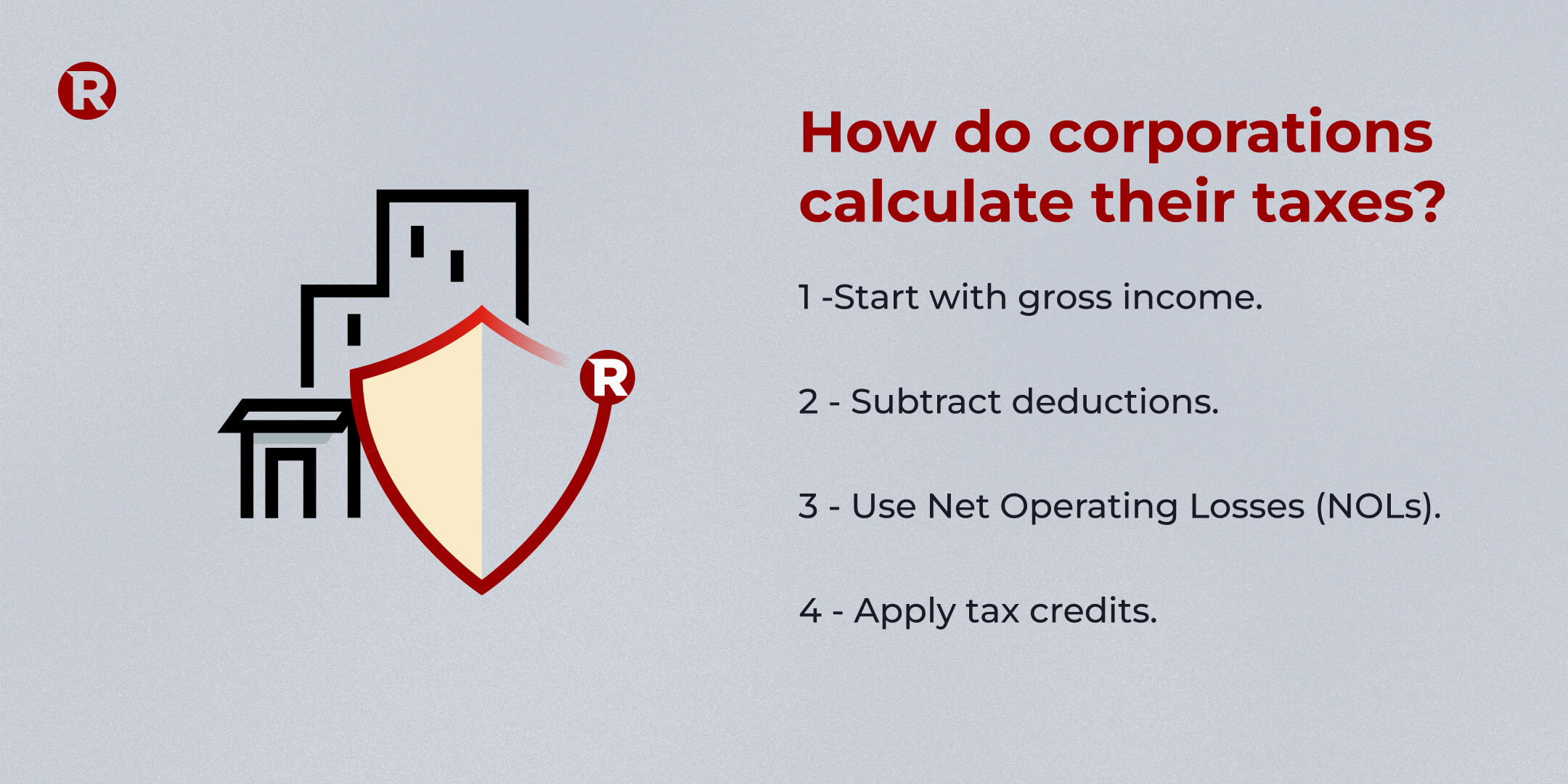How are corporations taxed?
Tax treatment is an important factor in choosing a business structure. Learn about how C-corp and S-corp structures are taxed.

How corporations are taxed depends on their structure: C-corps pay directly, which can lead to double taxation, while S-corps pass taxes through to their shareholders.
Owning a small business means you’re responsible for both the front-end and back-end operations. This means understanding how companies are taxed by the IRS and state tax authorities. We’re here to help you understand.
How are corporations taxed?
The IRS may tax a corporation in one of two ways, depending on the corporation’s business structure.
How are C-corporations taxed?
The C-corporation structure is the default business structure for U.S. corporations. This means that the IRS will treat a corporation as a C-corp for tax purposes unless the corporation chooses otherwise. Here’s how a C-corp is taxed:
- A C-corp pays taxes on profits directly to the IRS every few months – usually in April, June, September, and December.
- C-corp taxes may lead to double taxation: the corporation pays taxes on its earnings, and if it distributes dividends, shareholders must also pay taxes on that same money on their personal tax returns.
In small businesses, shareholders may also be employees. Income paid as a salary is considered a business expense and is therefore a tax deduction for the corporation. No double taxation in that case! However, it is worth noting that the IRS requires that salaries be “reasonable compensation” for the work performed.
How are S-corporations taxed?
This is a special kind of corporation as not every corporation qualifies as an S-corp. The IRS has specific rules for S-corps:
- No more than 100 owners.
- Only one type of stock.
- All owners must be U.S. citizens or residents.
- Certain organizations (like some trusts) can’t be owners.
However, taxation for S-corporations tends to be more favorable. An S-corp doesn’t pay taxes itself. Instead, the owners report their share of the company’s profits on their personal tax returns. That means no double taxation.
For example, if a business earns $50,000 and there are four owners, each one reports $12,500 on their personal tax return. This is called pass-through taxation.
What is the tax rate for a corporation?
The federal corporate tax rate for C-corporations is 21% of net income. The tax rate for an S-corporation is based on the owners’ personal tax rates, which can range from 10% to 37%.
How do corporations calculate their tax liability?

1. Start with gross income
That’s all the money the business earns.
2. Subtract deductions
These are costs that lower your taxable income, such as:
- Employee pay (salaries, wages, benefits).
- Rent and utilities.
- Marketing.
- Operating expenses.
- Equipment and tools.
Keep in mind: Dividends paid to shareholders can’t be deducted.
3. Use Net Operating Losses (NOLs)
Corporations that operate at a loss may be able to apply those losses to future tax years. If a business spends more than it earns, it has a Net Operating Loss (NOL) for that year. It can use that loss (NOL) in future years to reduce taxable income, but only up to 80% of that year’s taxable income.
For example, if a company loses $100,000 one year and earns $75,000 the next, it can only use $60,000 of the loss (80% of $75,000). The remaining $40,000 can be carried over to future years.
4. Apply tax credits
Tax credits reduce a taxpayer’s final tax bill. Corporations can claim tax credits through the IRS for many activities and investments, including:
- Building clean energy projects.
- Research and development.
- Buying electric vehicles.
- Making buildings more accessible.
For example, if a C-corp owes $10,500 in taxes but qualifies for $5,000 in tax credits, it pays only $5,500.
What tax forms do corporations use?
|
CORPORATION TYPE |
MAIN TAX FORM |
|
C-corporation |
Form 1120. They may also use Form 1120-W as a worksheet to calculate their estimated tax payments throughout the year. |
|
S-corporation |
Form 1120-S. Even though they don’t pay income tax directly, they must still report their income, deductions, credits, gains, and losses for the tax year. They also issue Schedule K-1 (Form 1120-S) to each shareholder, showing their share of the company’s income, deductions, and credits, which the shareholder reports on their personal return. |
What taxes do corporations pay besides federal income tax?
Both C-corporations and S-corporations will have other tax liabilities besides federal income tax including:
- State income tax, depending on where they’re located.
- Sales tax, if they sell taxable goods or services.
- Property tax, on real estate or personal property that they own.
- Capital gains tax, in the case of C-Corps.
Employment taxes are also some of the most important tax responsibilities for corporations with employees. A corporation must:
- Withhold income taxes, Social Security, and Medicare from employees’ paychecks.
- Match the amounts withheld for Social Security and Medicare.
- Send these amounts to the IRS monthly.
- File Form 941 with the IRS every quarter.
- Pay federal and state unemployment taxes.
Rocket Lawyer’s business formation services make starting and growing a small business simple and straightforward. Get started now!
Key takeaways
|
Additional resources
Learning how to enforce a contract is just one step. Explore these additional topics to learn more and take the next steps.

At Rocket Lawyer, we follow a rigorous editorial policy to ensure every article is helpful, clear, and as accurate and up-to-date as possible. This page was created, edited and reviewed by trained editorial staff who specialize in translating complex legal topics into plain language, then reviewed by experienced Legal Pros—licensed attorneys and paralegals—to ensure legal accuracy.
Please note: This page offers general legal information, but not legal advice tailored for your specific legal situation. Rocket Lawyer Incorporated isn't a law firm or a substitute for one. For further information on this topic, you can Ask a Legal Pro.
Disclosures
- This page offers general legal information, not legal advice tailored for your specific legal situation. Rocket Lawyer Incorporated isn't a law firm or a substitute for one. For further information on this topic, you can Ask a Legal Pro.